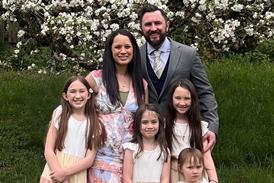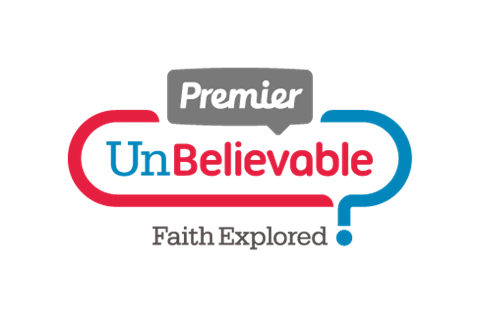Tanita Tualla Maddox believes it’s high time we started being far more open about faith with our youth and children

I was driving my kids to school one day when I thought, “How do my kids know what I believe about God?” We go to church. They see me read my Bible and pray, but how often do I talk about God in the everyday, even mundane, parts of my life. Then, I found myself wondering, “How do I know what my kids believe about God? Am I hoping that there is some kind of understanding through osmosis or simply living in the same home? If we don’t say things out loud and make the connections for our kids, we risk them not seeing who God is or how God impacts our lives.
How can we help our teenagers see who God really is?
What does your child believe about who God is? According to recent studies, a vast majority of thirteen-year-olds are at least slightly religious, at least slightly spiritual, and believe in a higher power. The problem is, none of this really says anything about God specifically. For many in Gen Z, God is a customizable concept or idea, formed by personal principles and a combination of beliefs from various traditions or no tradition at all. How can we help our teenagers see who God really is?
During the teenage years, adolescent brains are moving from concrete processing to abstract processing. Trying to understand God is part of abstract thinking. How would my kids know that I believe God is the creator who created this day if I don’t say it out loud? We make a mistake in assuming that because we go to church, read our Bibles and pray, that our children can translate that into real-world experience and application. We have to do the translating and connecting for our kids. We do this by sharing the following three things.
1. Share stories from the Bible (not just verses)
It can be easy to ask Google or ChatGPT for Bible verses about a topic or flip open to the concordance in the back of our Bibles. Cherry-picking isolated verses isn’t always the most helpful in seeing who God is. We should be reading stories, not only isolated verses.
When Jesus was asked questions, he often told stories. By reading stories in the Bible together, we are forcing ourselves, and our teenagers to slow down to find the answer. Remember, they have grown up in a world where answers can be attained instantly, and in a short, consumable, entertaining format. But there is a difference between our child asking us: Did you make mistakes when you were my age? And requesting: Can you tell me about a time you made a mistake when you were a teenager? One question requires a one-word answer. The other provides the kind of depth and connection that helps the answer stick.
When it comes to questions about life and faith, don’t give into the ease of providing a swift response
Instead of looking up verses about God’s provision, read stories at times when God provided, even stories when God did not provide what was requested, but something else instead. What do we learn about God as a provider from observing this story?
Get ready for heavy sighs, eye rolls, or a demand to quickly finish the conversation. When it comes to questions about life and faith, don’t give into the ease of providing a swift response. AI and social media already do that, and doing so can accidentally create a shallow experience or cultivate a shallow faith. Maybe ask: Do you really want to know? Because you are important enough and God is important enough to slow down and take in a whole story and not just a verse. We usually remember the stories.
2. Share your thoughts outloud
I was in the car with my kids and said outloud, “Didn’t God create a beautiful day today?” My kids looked out the car windows. They didn’t say anything, but I could tell they were paying attention to the sun, sky, and trees whizzing by. I continued, “And even if it was a rainy and cloudy day, God still would have created a good day. Rain or shine, God is a good Creator.” Finally, my oldest responded with a brief, “Mm, hm.”
God is with us through all we experience, and we can be alongside our teenagers in their experiences
It wasn’t a sermon or a study; it was a couple sentences, and I felt a little silly and cheesy saying them out loud. But you know what? Kids remember the silly and cheesy things we do, especially when we do them repeatedly. From that interaction, my kids would know that I believe God is a good creator. Find ways to connect who God is to what is happening in everyday moments and speak those out loud. These thoughts can be shared doing laundry, eating dinner, exercising, and driving. We can say out loud how we experience God in these places or how our faith in God directs these places. Just because it feels silly, or even uncomfortable, doesn’t mean we don’t do it. Be the cheesy parent who talks about how God impacts the big and little things of life.
3. Share posture alongside our teenagers
I once read that we, as parents, try to limit the pain our children experience to match our own threshold for pain. In other words, we only let our kids experience a level of pain we are comfortable with. Parents can be tempted to rush past the emotions and toward solutions, rather than experience the same posture alongside them. We don’t like feeling the pain or hurt that comes from our children experiencing pain or hurt. However, many times, when our teenagers exclaim, “You’re not listening to me!” What they are really saying is, “You are not feeling alongside me! Why don’t you feel what I feel?” Jesus wept at the tomb of Lazarus. Jesus did not tell Mary and Martha to stop crying, even though He knew what was going to happen next. Jesus did not rush past the emotions, but shared a posture with those in grief.
Read more:
The rise of permissive parenting, and how to take a gentle but biblical approach
4 ways to train our children for spiritual battles
When our teenagers are sad, we can sit next to them and be sad. When they are hurt, we can sit next to them in their hurt. When they are celebrating, we can cheer and celebrate with them. God is with us through all we experience, and we can be alongside our teenagers in their experiences.
Let’s live our faith outloud to help provide a fuller view of God for our teenagers. Ten years ago, arguments exploded regarding a specific dress, infamously known as “the dress.” Is the dress black and blue or gold and white? The issue arose because the shared photo was cropped in a certain way so that people’s brains processed the reflection of light and color in different ways. We couldn’t see the whole picture. We are all working with a partial picture or cropped view of God. We need each other to help us understand and see who God is.
Let’s share that with our teenagers! We can say, “I need your help to see God. Tell me what you notice and understand. Share with me your questions and doubts. You help me see God better.”































